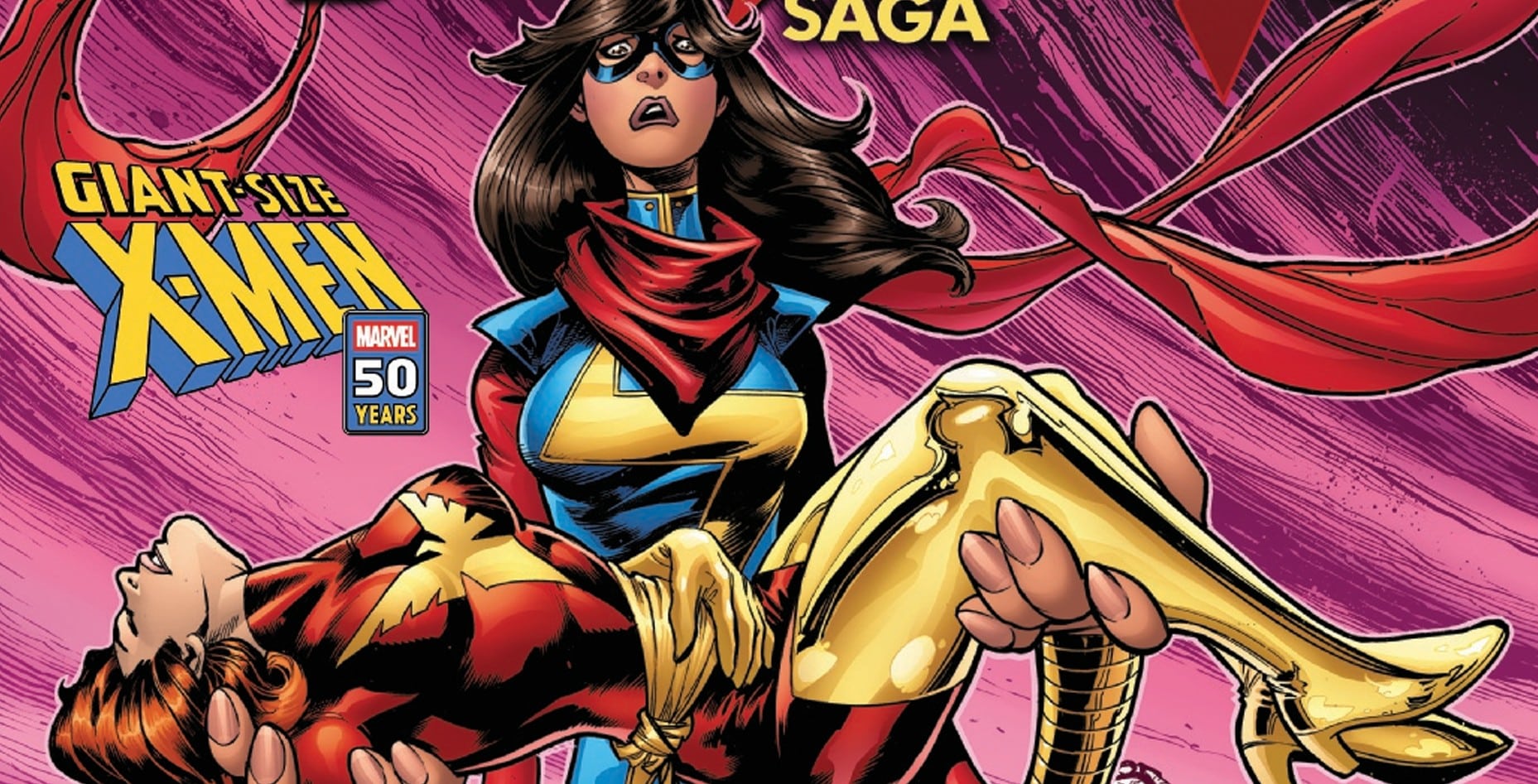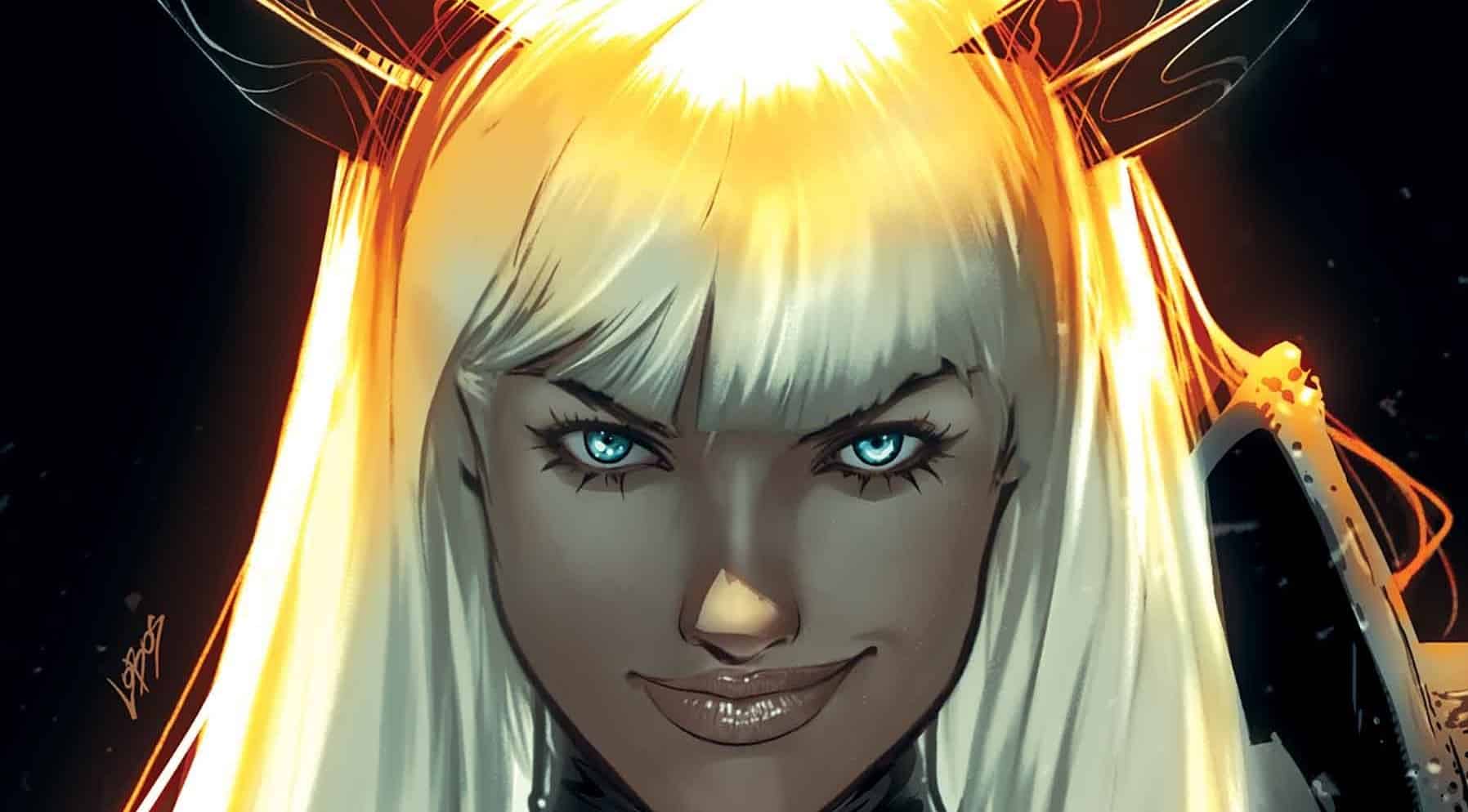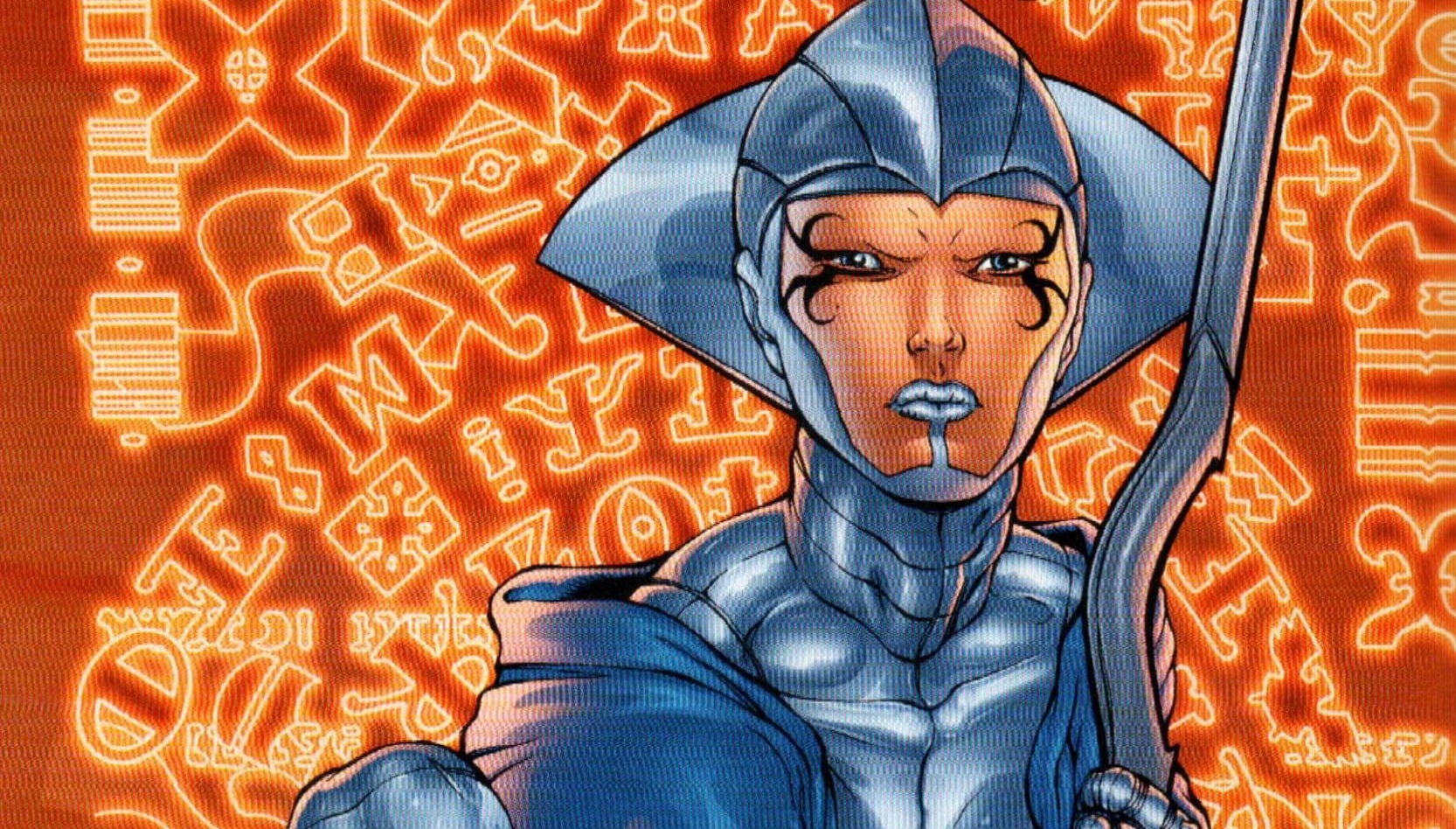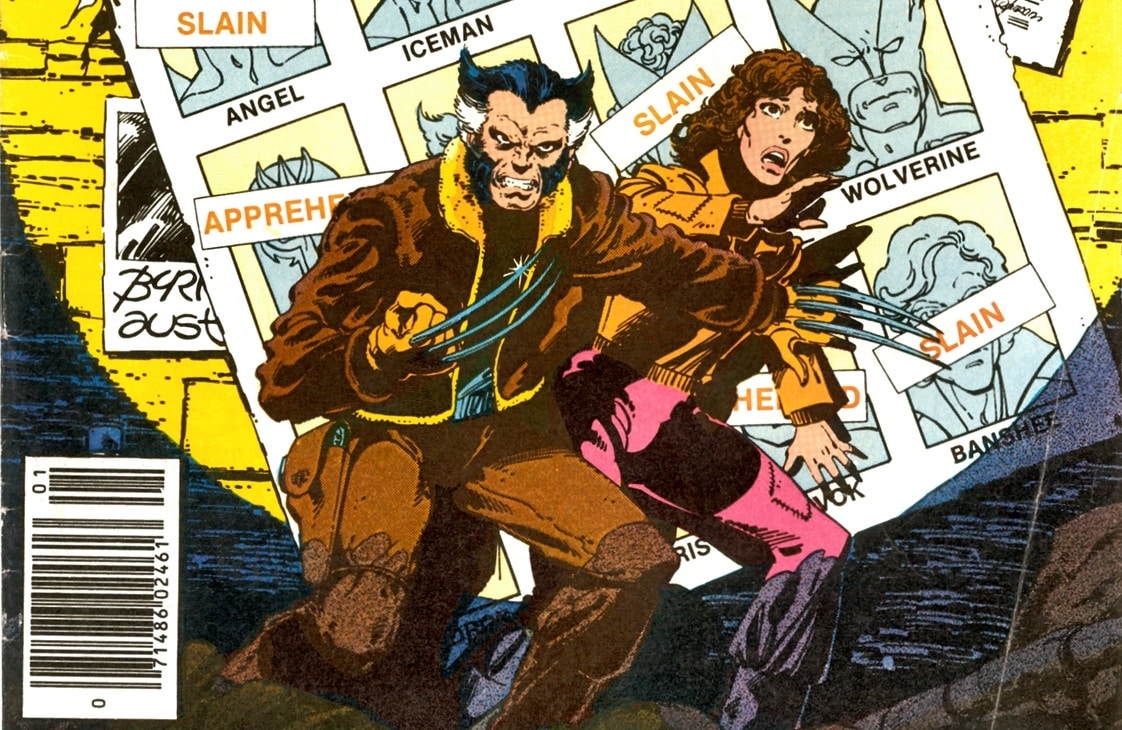Last week, our team got together to talk about Jackson Lanzing, Collin Kelly and Adam Kubert’s X-Men anniversary special Giant-Size X-Men (Vol. 3) #1, wherein Avengers superfan and now forced-into-mutantdom-by-the-MCU Kamala Khan started a time-traveling journey through the X-Men’s greatest hits as she was chased by the empty shell of Legion’s leftover multiple personalities. While the entire idea of this “event” (which I have to assume was editorially driven) immediately read as a crass, SEO-style nostalgia sales grab — an excuse to slap logos onto the front of #1s instead of telling an exciting new chapter in our characters’ lives — if anyone could salvage such a makeshift idea, it should be the talented pair of Lanzing and Kelly, writers who regularly show their expertise at grappling with decades’ worth of continuity in their Star Trek work.
Unfortunately, even after one issue we had logic questions about story beats that didn’t line up with established continuity. Mainly, why was Cyclops able to remember Kamala (he shouldn’t have been able to given the rules established at the end of X-Termination), and why was Kamala able to communicate with the island of Krakoa by speaking Krakoan, a mutant-made language that is not Krakoa’s native tongue? These are the kinds of details that should be caught by editorial so they can either be creatively explained in-story or corrected altogether before scripts turn into completed comics. But also, look, this is comics, a freeform lab of creative funk where not everything lines up all the time and sometimes you just have to shrug and move to the next issue with faith that inconsistencies will eventually make sense.
Then I read this week’s Giant-Size Dark Phoenix #1. Beautifully illustrated by the incredibly talented Rod Reis, the quality jump from the first issue was tremendous. But as Kamala stepped into another back issue from the longbox, I bumped up against a truly bizarre scenario that I thought was worth exploring in more detail, if only because it highlights the very confusing way superhero comics can be made and how the various voices that contribute to them over the years create overlapping narratives that are then forced to coexist or be resolved most often by different creative teams than those who started the problem in the first place.
So let’s set the scene, as originally told in Uncanny X-Men #136: The Dark Phoenix has flown into space and committed cosmic genocide by eating the D’Bari’s sun. Dark Phoenix returns to Earth, where she fights the X-Men. In Giant-Size Dark Phoenix #1, the Dark Phoenix is not beaten by the telepathic might of Professor Xavier. In this version, the Legion-shell shows up and entices the Phoenix to jump from Jean to his body, which it does, leaving the body of Jean Grey behind with her teammates. There’s only one massive problem with this scenario:
That ain’t Jean Grey.

As annoying X-nerds know, Jean Grey was not originally intended to die in Uncanny X-Men #137. As later published in Phoenix: The Untold Story, Claremont intended Jean to be separated from the Phoenix by the Shi’ar and returned to Earth with her teammates. It was Marvel Editor-in-Chief Jim Shooter who thought Jean’s act of genocide was too heinous for the character to remain alive, and so the story that made it to print had Jean sacrificing herself on the moon in one of the most famous moments in comic book history. But it would be artist John Byrne, working from an idea of Kurt Busiek’s, who complicated the story further by not only bringing Jean Grey back from the dead in Fantastic Four #286 but by retconning who exactly died in Uncanny #137. In this retcon, the last time we saw Jean Grey was actually in Uncanny X-Men #100 after she crashed into Jamaica Bay. The character we saw for almost 40 issues afterward was the Phoenix, while the real Jean Grey, still dressed for her date with Scott, lay in a protective cocoon waiting for the Avengers to discover it in Avengers #263.
And this leads to our current conundrum. If the character we see in Giant-Size Dark Phoenix #1 is the Phoenix, and not Jean Grey, how would the Phoenix transfer to Legion? What would remain of the corporeal form of Jean if it were entirely made of cosmic power? In this story, Jean Grey surely appears to be herself. She returns to the mansion and is hurt by her colleagues questioning her morals before getting a pep talk from Kamala. But being the stupid Marvel Wiki X-fan I am, I couldn’t help but think: What is that? What is lying in that bed crying? Or experiencing human emotion? What is the body that reabsorbs the Phoenix on the moon at the end of this issue only to be killed again? Because once again:
That ain’t Jean Grey.
Why does this even matter? Is it just being pedantic to call these kinds of things out and question them? I would argue instead that reading critically for continuity is both very stupid and also one of the great joys of reading shared-universe superhero comics.
I recall reading House of X and Powers of X and obsessing over whether the Charles Xavier we saw on those pages was actually “X,” the Xavier reborn in the body matter of Fantomex in Charles Soule’s Astonishing X-Men Vol. 4. I am almost entirely sure that writer Jonathan Hickman could have given a flying fig about Soule’s story. He wanted to use Xavier, and there he was. It would only be later, off-page, that editor Jordan D. White would confirm it was “X” until the character was killed in X-Force Vol. 6 #1. I know how dumb it was to be asking for logic when the easier step was to simply step over the previous stories, but part of the pleasure in asking questions like this is wondering how to make sense of Xavier’s soul appearing in Heaven (Amazing X-Men), his brain being used for evil (Uncanny Avengers) and his psyche being held captive by the Shadow King (Astonishing) all at the same time.
The reality is that when you have as many chefs in the kitchen as you do when creating a superhero comic, things aren’t always going to make sense. Depending on the publisher’s priorities, who is answering to whom, and what kind of time and attention goes into the creation of an individual issue, opportunities abound as “mistakes” are made that can open doors for future creators.
Jean Grey is already one of fiction’s most complex characters. Inside her brain she contains the memories of her own experiences, those of the Phoenix when it replaced her, those of her clone Madelyne Pryor, and those of her teenage time-displaced self. Incredible and some might say silly amounts of work have gone into rectifying the various permutations of this character into the semblance of a single entity. When a character can remember, for instance, the birth of a son she never physically bore, that alone is fascinating stuff for character development and evolution. Stuff Louise Simonson and Bernard Chang started to dig into with their 2023 Jean Grey miniseries.
Perhaps this issue featuring a new non-Jean will simply add to the pantheon of weird idiosyncrasies that make up this individual character. What’s clear is that comics continue to be fascinating examples of team-based storytelling in a decades-old game of telephone. It might be asking too much for an issue in 2025 to cohere to an issue from 1985 when at the end of the day the job of making Marvel comics sometimes boils down to IP management for a multinational brand. Despite this, I still want to make sense of X-Men because of and even in spite of its confusion. So while I raised a mighty brow at another example of head-scratchery, I have to also look forward to creators who might use the next anniversary of the X-Men to travel back to this issue to further muddy the waters of the past in pursuit of a more lucid future.
Adam Reck is the cartoonist behind Bish & Jubez as well as the co-host of Battle Of The Atom. Follow him @adamreck.bsky.social.






